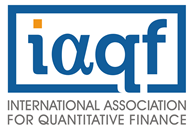
6:00 PM Seminar Begins
7:30 PM Reception
Hybrid Event:
Fordham University
McNally Amphitheater
140 West 62nd Street
New York, NY 10023
Free Registration!
For Virtual Attendees: Please select Virtual instead of member type upon registration.
Abstract:
This presentation explains the Expectile, Conditional Value-at-Risk (CVaR)/Superquantile, Value-at-Risk (VaR)/Quantile and other risk measures in the framework of the Fundamental Risk Quadrangle (FRQ) theory. According to the FRQ, a Quadrangle includes four stochastic functions: Error, Regret, Risk, and Deviation. These functions are interconnected through a Statistic stochastic function. Risk is used in stochastic optimization, and Error is employed in the statistical estimation of the corresponding Statistic. The Expectile, similar to VaR and CVaR, is used in risk management. Quadrangles based on VaR and CVaR statistics are well-established. The Errors in these Quadrangles are minimized for VaR and CVaR estimation. We focus on the recently proposed Quadrangles based on Expectile. We examine properties of these Expectile Quadrangles, with a particular emphasis on the new Quadrangle, where the Expectile is both Statistic and Risk. This Expectile Quadrangle is based on the new Piecewise Linear Error, which is an alternative to the standard Asymmetric Variance Error. We have demonstrated the equivalence of Expectile regression with these two Errors. Linear regression with the Piecewise Linear Error is reduced to linear programming. Optimization of Expectile is reduced to convex and linear programming using the FRQ Regret Theorem. Moreover, the Kusuoka representation of Expectile, together with the FRQ Regression Theorem implies the equivalence of Expectile and Quantile regressions. Theoretical findings are validated with several case studies.
Bio:
Stan Uryasev is Professor and Frey Family Endowed Chair of Quantitative Finance at the Stony Brook University.
He received his M.S. in Applied Mathematics from the Moscow Institute of Physics and Technology (MIPT), Russia, in 1979 and Ph.D. in Applied Mathematics from the Glushkov Institute of Cybernetics, Kiev, Ukraine in 1983. From 1979 to 1987 he held a research position at the Glushkov Institute. From 1988 to 1992 he was a Research Scholar at the International Institute for Applied System Analysis, Luxenburg, Austria. From 1992 to 1998 he held the Scientist position at the Risk and Reliability Group, Brookhaven National Laboratory, Upton, NY. From 1998 to 2019 he was the George and Rolande Willis Endowed Professor at the University of Florida, and the director of the Risk Management and Financial Engineering Lab.
His research is focused on efficient computer modeling and optimization techniques and their applications in finance and DOD projects. He published four books (two monographs and two edited volumes) and more than 130 research papers. He is a co-inventor of the Conditional Value-at-Risk and the Conditional Drawdown-at-Risk optimization methodologies. He developed optimization software in risk management area, including Drawdown and Credit Risk minimization.
His joint paper with Prof. Rockafellar on Optimization of Conditional Value-At-Risk in The Journal of Risk, Vol. 2, No. 3, 2000 is among the 100 most cited papers in Finance. Many risk management/optimization packages implemented the approach suggested in this paper (MATLAB implemented a toolbox).
Stan Uryasev is a frequent speaker at academic and professional conferences. He has delivered seminars on the topics of risk management and stochastic optimization. He is on the editorial board of a number of research journals and is Editor Emeritus and Chairman of the Editorial Board of the Journal of Risk.

